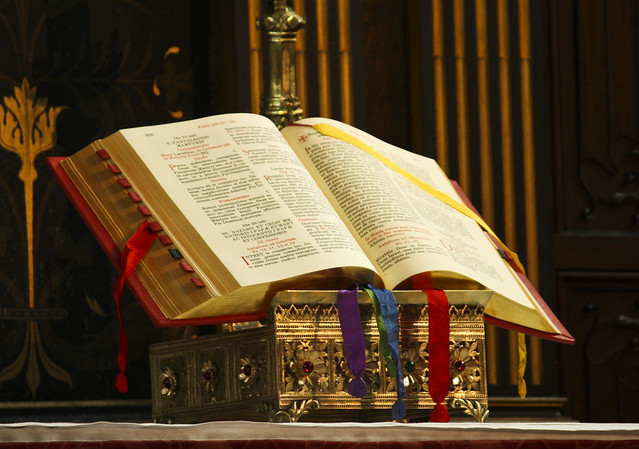 |
| This isn't the exact book, but you get the idea |
Ok, so a little over the top with the header above, but it's true: the First Sunday of Advent, 2011 will be the first day of the rest of our Catholic lives. The words we use to pray together as a community will change. The next few weeks this blog will have a series of blog posts to focus in on preparing us for the weekend of November 27. Hundreds of resources exist to help parishes, parents, teenagers, and teachers get up to speed about the New Roman Missal and its translation. It's my goal to highlight some of the best ones our Catholic churches have to offer for adults and children alike.
How Did We Get Here?
From St. Louis University's FAQs on the new Missal, we get the quick answer:
Pope Benedict XVI and Pope John Paul II before him have expressed their desire to restore greater mystery, transcendence, and reverence to the celebration of the Mass.To dig deeper, St. Mark's own Mickey Edwards provides an excellent brief history of the Mass in the 20th century in one short article. You can read the whole article in our August/September Maneline (PDF warning). To quote from this article:
In 1982 a second edition of the Roman Missal appeared in Latin, and in 1998 the bishops of English-speaking countries submitted a translation to Rome for approval. But in 1999 the translation principles of Comme le prevoit [nb: published after Vatican II] were set aside by a new Vatican document on translation, Liturgiam authenticam, which rejects the principle of “dynamic equivalence” in favor of “formal equivalence.” Formal equivalence requires that every word in the Latin text be rendered in the translation and it also directs that the vocabulary, syntax, punctuation, and capitalization patterns found in Latin must be reproduced as far as possible in the vernacular translation. Gender-inclusive grammatical forms now commonly used in English are not acceptable.Process: How Did This Happen?
In 2002 a third edition of the Roman Missal was promulgated in Latin. Guided by the new translation norms in Liturgiam authenticam, the ICEL produced an English translation which was approved by Rome in 2010. This is the translation that we will begin using on November 27th.
LifeTeen has a great video summary of how the translation came into being:
In future, we'll dive into specific parts of the New Roman Missal. Do you have any questions? What would you like to see us cover? Leave us a comment and let us know.
Image Credit: Lawrence OP
No comments:
Post a Comment
What do you think?